Vytas SunSpiral
Trajectory Tracking Control of a Flexible Spine Robot, With and Without a Reference Input
Aug 24, 2018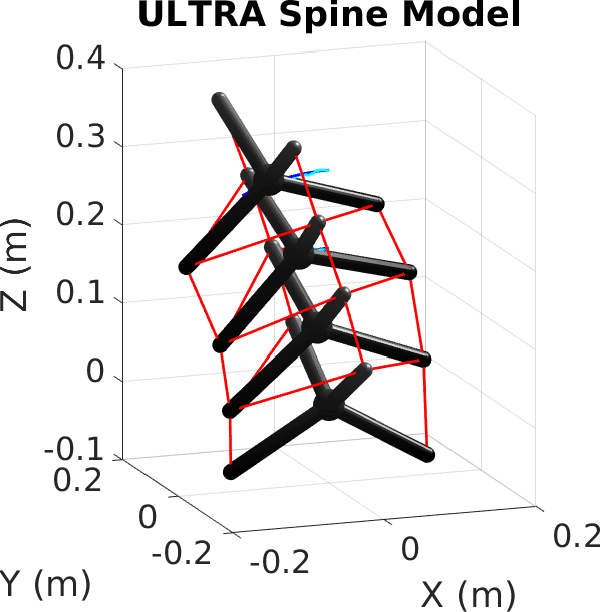
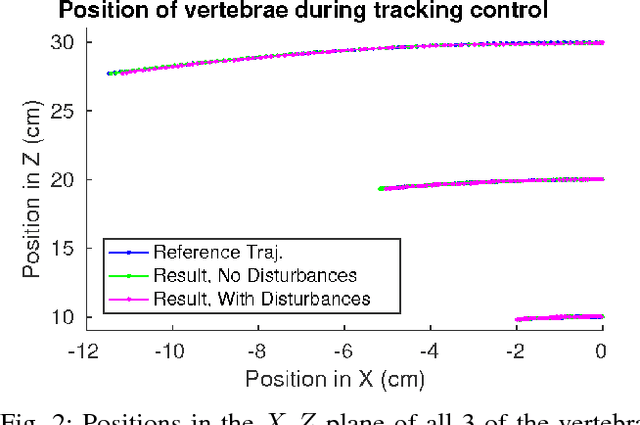
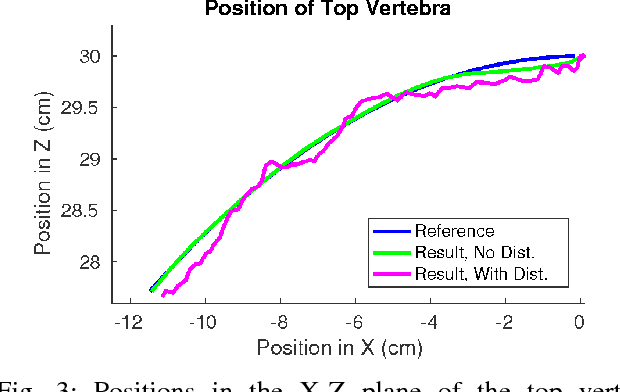
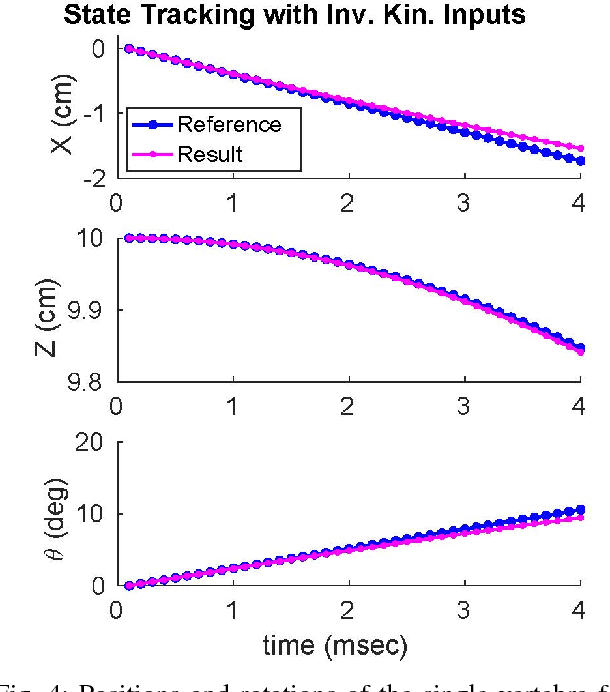
Abstract:The Underactuated Lightweight Tensegrity Robotic Assistive Spine (ULTRA Spine) project is an ongoing effort to develop a flexible, actuated backbone for quadruped robots. In this work, model-predictive control is used to track a trajectory in the robot's state space, in simulation. The state trajectory used here corresponds to a bending motion of the spine, with translations and rotations of the moving vertebrae. Two different controllers are presented in this work: one that does not use a reference input but includes smoothing constrants, and a second one that uses a reference input without smoothing. For the smoothing controller, without reference inputs, the error converges to zero, while the simpler-to-tune controller with an input reference shows small errors but not complete convergence. It is expected that this controller will converge as it is improved further.
Scalable Co-Optimization of Morphology and Control in Embodied Machines
Dec 12, 2017



Abstract:Evolution sculpts both the body plans and nervous systems of agents together over time. In contrast, in AI and robotics, a robot's body plan is usually designed by hand, and control policies are then optimized for that fixed design. The task of simultaneously co-optimizing the morphology and controller of an embodied robot has remained a challenge. In psychology, the theory of embodied cognition posits that behavior arises from a close coupling between body plan and sensorimotor control, which suggests why co-optimizing these two subsystems is so difficult: most evolutionary changes to morphology tend to adversely impact sensorimotor control, leading to an overall decrease in behavioral performance. Here, we further examine this hypothesis and demonstrate a technique for "morphological innovation protection", which temporarily reduces selection pressure on recently morphologically-changed individuals, thus enabling evolution some time to "readapt" to the new morphology with subsequent control policy mutations. We show the potential for this method to avoid local optima and converge to similar highly fit morphologies across widely varying initial conditions, while sustaining fitness improvements further into optimization. While this technique is admittedly only the first of many steps that must be taken to achieve scalable optimization of embodied machines, we hope that theoretical insight into the cause of evolutionary stagnation in current methods will help to enable the automation of robot design and behavioral training -- while simultaneously providing a testbed to investigate the theory of embodied cognition.
Deep Reinforcement Learning for Tensegrity Robot Locomotion
Mar 08, 2017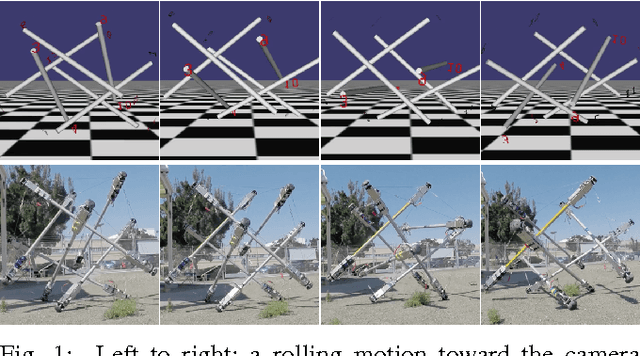
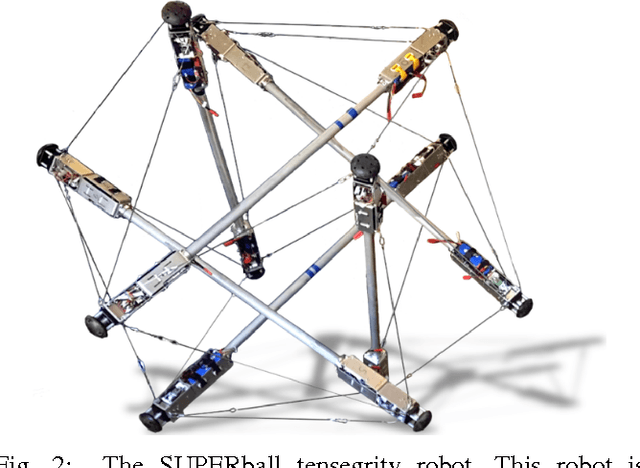
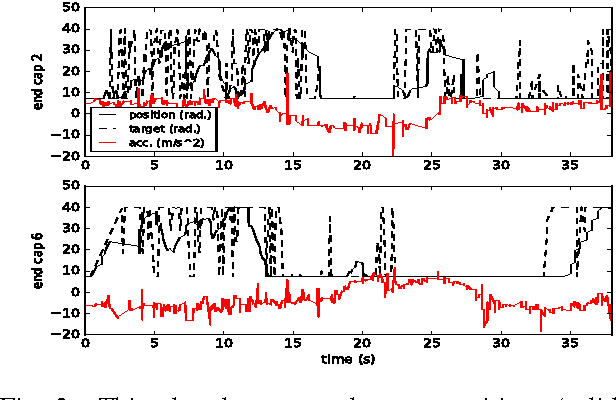

Abstract:Tensegrity robots, composed of rigid rods connected by elastic cables, have a number of unique properties that make them appealing for use as planetary exploration rovers. However, control of tensegrity robots remains a difficult problem due to their unusual structures and complex dynamics. In this work, we show how locomotion gaits can be learned automatically using a novel extension of mirror descent guided policy search (MDGPS) applied to periodic locomotion movements, and we demonstrate the effectiveness of our approach on tensegrity robot locomotion. We evaluate our method with real-world and simulated experiments on the SUPERball tensegrity robot, showing that the learned policies generalize to changes in system parameters, unreliable sensor measurements, and variation in environmental conditions, including varied terrains and a range of different gravities. Our experiments demonstrate that our method not only learns fast, power-efficient feedback policies for rolling gaits, but that these policies can succeed with only the limited onboard sensing provided by SUPERball's accelerometers. We compare the learned feedback policies to learned open-loop policies and hand-engineered controllers, and demonstrate that the learned policy enables the first continuous, reliable locomotion gait for the real SUPERball robot. Our code and other supplementary materials are available from http://rll.berkeley.edu/drl_tensegrity
A Bio-Inspired Tensegrity Manipulator with Multi-DOF, Structurally Compliant Joints
Sep 01, 2016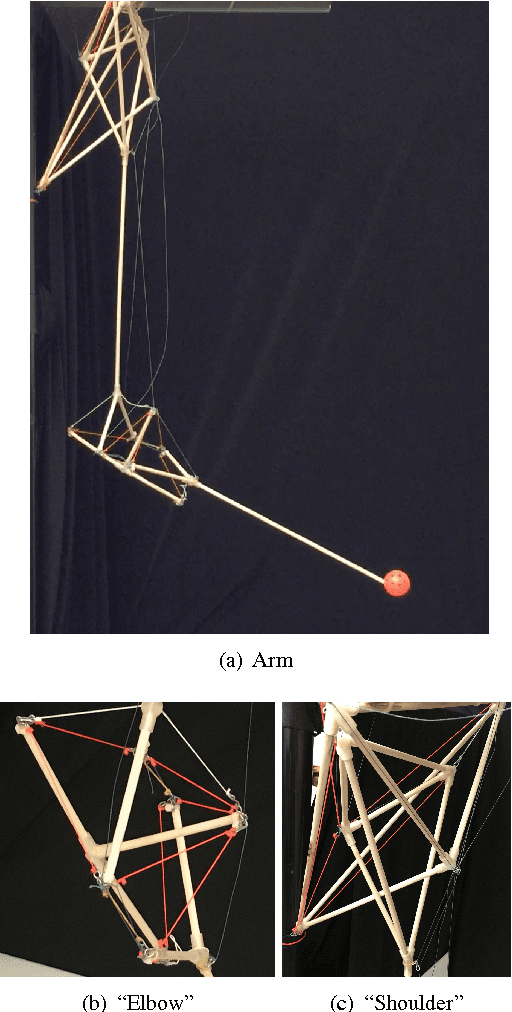
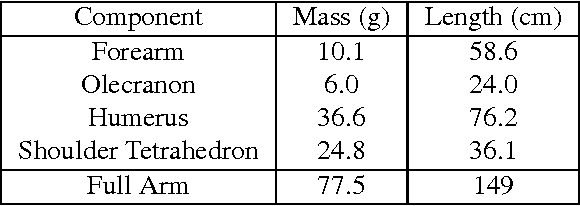

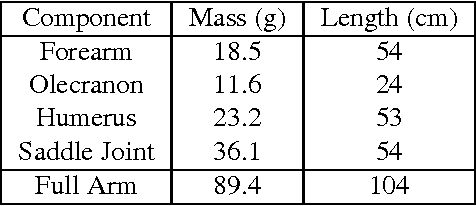
Abstract:Most traditional robotic mechanisms feature inelastic joints that are unable to robustly handle large deformations and off-axis moments. As a result, the applied loads are transferred rigidly throughout the entire structure. The disadvantage of this approach is that the exerted leverage is magnified at each subsequent joint possibly damaging the mechanism. In this paper, we present two lightweight, elastic, bio-inspired tensegrity robotics arms which mitigate this danger while improving their mechanism's functionality. Our solutions feature modular tensegrity structures that function similarly to the human elbow and the human shoulder when connected. Like their biological counterparts, the proposed robotic joints are flexible and comply with unanticipated forces. Both proposed structures have multiple passive degrees of freedom and four active degrees of freedom (two from the shoulder and two from the elbow). The structural advantages demonstrated by the joints in these manipulators illustrate a solution to the fundamental issue of elegantly handling off-axis compliance.
State Estimation for Tensegrity Robots
Feb 19, 2016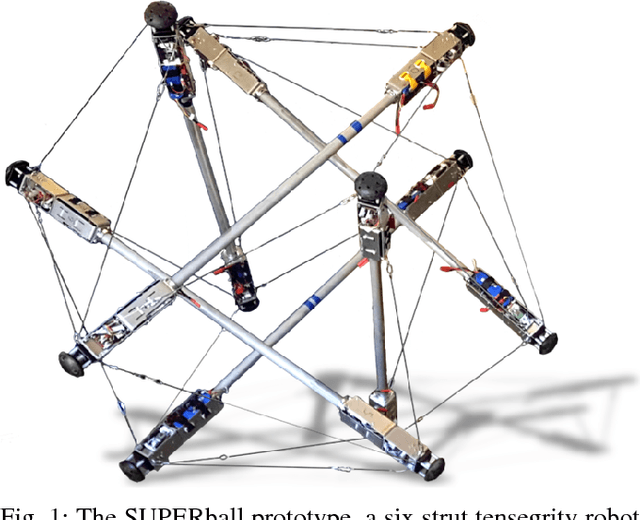
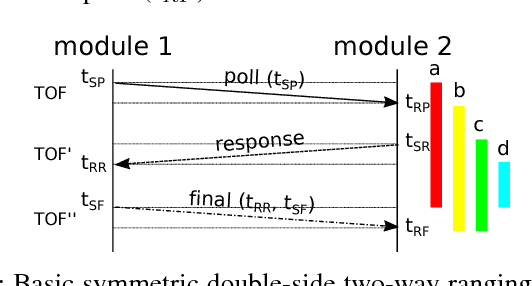
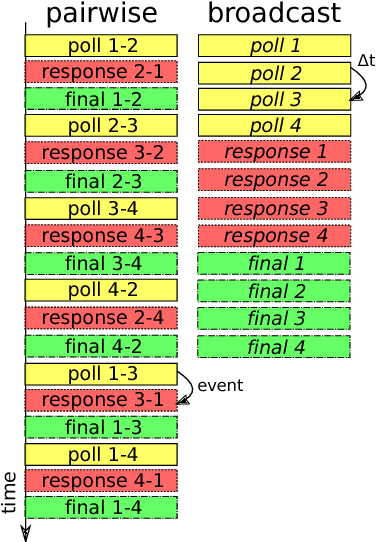
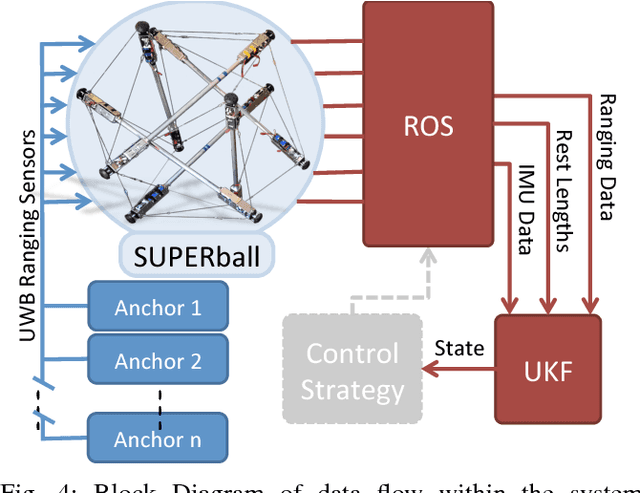
Abstract:Tensegrity robots are a class of compliant robots that have many desirable traits when designing mass efficient systems that must interact with uncertain environments. Various promising control approaches have been proposed for tensegrity systems in simulation. Unfortunately, state estimation methods for tensegrity robots have not yet been thoroughly studied. In this paper, we present the design and evaluation of a state estimator for tensegrity robots. This state estimator will enable existing and future control algorithms to transfer from simulation to hardware. Our approach is based on the unscented Kalman filter (UKF) and combines inertial measurements, ultra wideband time-of-flight ranging measurements, and actuator state information. We evaluate the effectiveness of our method on the SUPERball, a tensegrity based planetary exploration robotic prototype. In particular, we conduct tests for evaluating both the robot's success in estimating global position in relation to fixed ranging base stations during rolling maneuvers as well as local behavior due to small-amplitude deformations induced by cable actuation.
A light-weight, multi-axis compliant tensegrity joint
Oct 26, 2015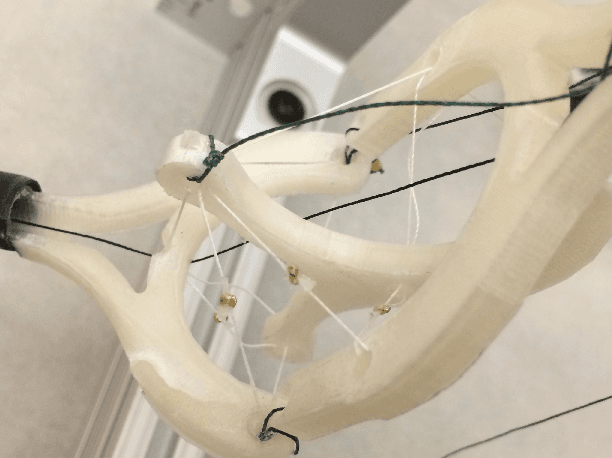
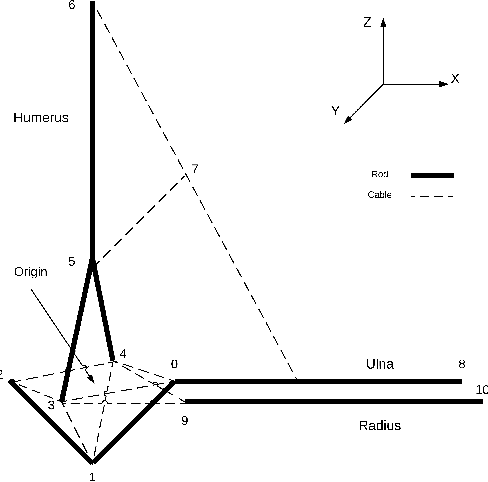
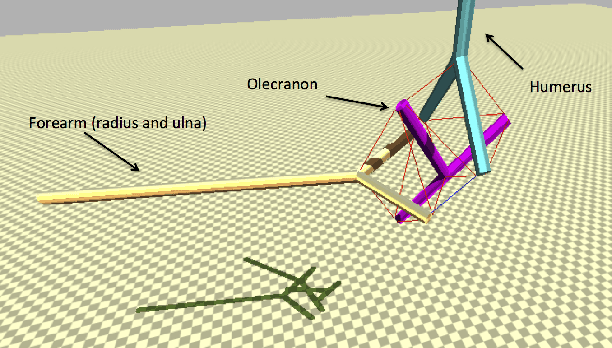
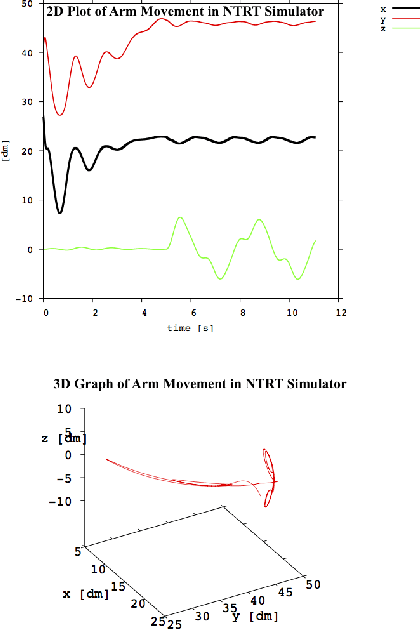
Abstract:In this paper, we present a light-weight, multi- axis compliant tenegrity joint that is biologically inspired by the human elbow. This tensegrity elbow actuates by shortening and lengthening cable in a method inspired by muscular actuation in a person. Unlike many series elastic actuators, this joint is structurally compliant not just along each axis of rotation, but along other axes as well. Compliant robotic joints are indispensable in unpredictable environments, including ones where the robot must interface with a person. The joint also addresses the need for functional redundancy and flexibility, traits which are required for many applications that investigate the use of biologically accurate robotic models.
 Add to Chrome
Add to Chrome Add to Firefox
Add to Firefox Add to Edge
Add to Edge